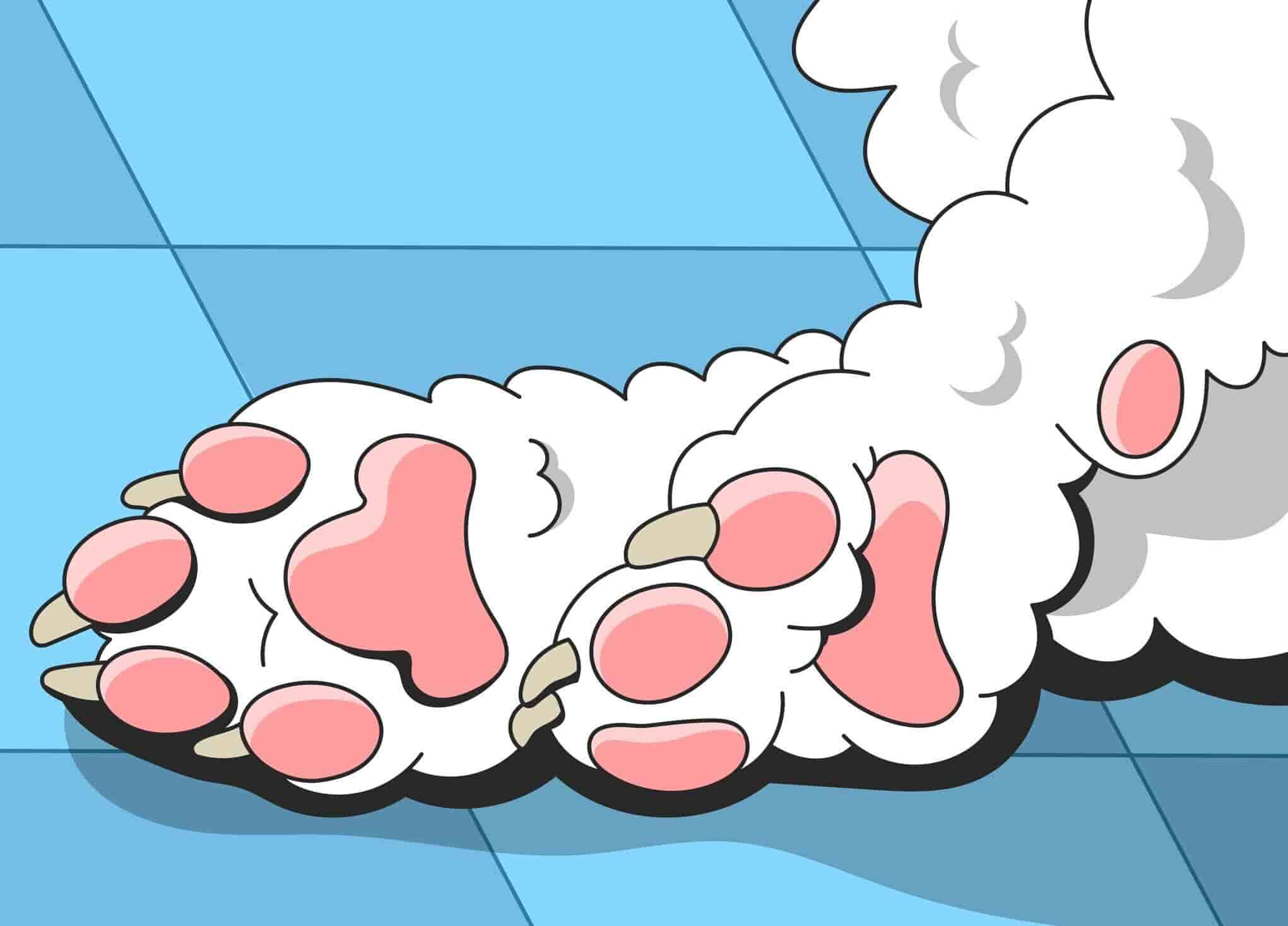When we talk of taking care of our dog’s health, this also involves taking care of the skin cells that protect their feet — their nails. As much as we want our dogs not to feel pain and discomfort from certain illnesses, we also want to make sure that their nails aren’t hurting them.
This article was reviewed by our expert veterinarian, Chris Vanderhoof (DMV).
For us to take care of our dog’s nails, it helps to be aware of its anatomy. Let us get to know more about dogs’ toenails below.
- Dogs have toenails at the end of each toe, with 4 on each of their paws.
Note from Dr. Vanderhoof: Most dogs actually have five toes/nails because of the dewclaw, unless they were removed. They can be easy to forget about since they don't touch the ground.
-
Just like human toenails, a dog's toenails are also made up of a certain protein known as keratin.
-
The shape of a dog’s nails is oval. They are wider at the toe area and become narrower when growing out.
-
Inside of every nail is a bundle of very sensitive blood vessels and nerves called the quick and when it is injured or cut, it will bleed and will be painful for your dog.
-
In clear nails, the quick can be identified with its pink color while the nail that grows beyond the quick is colored white. However, some dogs have dark nails, making the quick a bit hard to identify.
-
The part of the nail above the quick doesn’t have nerves, making these not as sensitive.
-
When you touch your dog’s paw, they shouldn’t feel pain from their nails if their nails are healthy/well-trimmed.
-
It’s best to start regularly taking care of a dog’s nails while they are still a puppy. Offering them treats while doing so will help them associate it with a positive experience instead of being afraid.
Read more: 10 Plants Poisonous to Cats and Dogs
How To Trim Dog Nails?
How to use dog nail clippers? What you want is to trim your dog’s toenails on the part before the quick, cutting just the tips of their nails. One piece of advice is this - when you look at your untrimmed dog’s nail on the side view, it will curve after the quick.
Here are the steps in trimming your dog’s nails including how to use dog nail clippers:
- Focus on 1 nail first and trim it carefully. After you’ve trimmed one nail, praise your dog and give them a treat. Do the same with a few other nails on the same paw.
- After finishing the trimming of nails on one paw, pause and take some time to play with your dog first. Relax.
- Do step one on the rest of the nails on the same paw.
The next day, you can do the steps above on another paw. And when you’ve become more experienced, you can trim the nails on all four paws in one sitting. If you are worried, however, you can have your dog’s nails trimmed at the vet to be safe.
My Dog Has a Broken Nail
How To Stop Dog Nail Bleeding
Accidents do happen and are common when trimming dogs’ nails. On occasions where you may accidentally trim your dog’s nail too short, bleeding may occur, but there is no need to panic. Many accidents due to trimming nails are mostly nothing serious and can be treated at home.
To stop the bleeding due to nail-trimming accidents, using styptic powder helps control the bleeding since it has anti-hemorrhage agents that contract the small blood vessels in the affected area. It helps clot the blood to prevent harmful bacteria from getting into the bloodstream.
If you follow the instructions on how to use the powder, it should stop the bleeding in around 20 minutes. However, if the bleeding continues after that, contact your vet for advice.
Dog Nail-Trimming Tools
Grinder, File, Cap, Clippers, Trimmer, Scratching Board
Choose dog nail-trimming tools that you are most comfortable with. Guillotine-style nail clippers and other trimmers for example are easy to use, but they may cause accidental bleeding if you’re not that careful.
Meanwhile, if you just want to do a little touch-up or if you’re worried about using clippers, you may use a grinder. Because these tools are usually battery-operated, grinding the nails in a gradual way instead of clipping makes them less prone to accidental bleeding.
Other tools that you can use to trim your dog’s nails are caps, files, and scratching boards. Remember to have some styptic powder ready so that you can use it if ever an accident occurs.
Dog Nail Infections
Whether it’s a tiny cut or an ingrown nail, a dog’s claw may be susceptible to infection if not addressed properly. According to research, dog nail infections or nail bed infections can be defined as any disease that affects your dog’s claw and the area surrounding it. The are several possible causes of nail infections in dogs and are quite common.
Luckily, it is relatively easy to treat and can heal quickly, however, it is important to bring your dog to the vet if you suspect any infection to prevent the worsening or spread of the infection.
Below are some examples of dog nail infections:
Nail injury/trauma
Among the causes of nail infections, this is the most common. Different injuries and trauma to the nails can become wounds that may be prone to infection. Examples of such injuries and trauma include stepping on foreign objects (glass, rocks, thorns, etc.), paw pad burns/frostbite, allergies, and stubbed nails that break/split/crack.
Bacterial infection
When a dog’s paw is injured or traumatized leading to cuts, scrapes, or wounds, it may become exposed to different bacteria and may result in inflammation around your dog’s claws. Your dog may also get bacteria when your dog licks or chews their injury. Among the first signs of infection is when your dog’s nails are red, inflamed, or warm.
Fungal infection
Onychomycosis happens when there is a fungal infection in your dog’s claws or nail beds. Most cases are due to ringworm infection. Although ringworm mostly affects your dog's skin and hair, severe cases can affect the claws as well, leading to onychomycosis.
Ingrown nail
If a dog’s nails aren’t regularly trimmed, it’s possible for their nails to grow long and curl around, going into your dog’s footpad. If the nail goes deep into your dog’s skin, it may be vulnerable to infection or what is called an “ingrown nail”.
This can bring your dog much discomfort that they may not want to walk or may seem lethargic. Those who are more prone to ingrown nails are those who don’t like their nails to be trimmed as well as senior dogs with an increase in nail growth.
Trimming Nails on Aggressive/Anxious Dog
Handling their paws and nails can be something that your dog dislikes, especially when they first encounter you doing so. Because they may not feel comfortable, it is important to make them feel that there’s nothing to worry about. It’s best to start when your dog is a puppy so that they’ll get used to the sensation of us handling their paws and nails.
Take lots of care and go slow to give your dog some time to become familiar with you touching their paws and nails. Several attempts may be needed before they become accustomed to it. When they’ve relaxed, slowly introduce your nail-trimming tool and make your way to cutting their nails slowly and carefully.
Make the experience feel positive by praising and giving your dog some treats as well as cuddles. With patience, you’ll be able to trim your dog’s nails without them feeling defensive or anxious.
Read more: Aggression in Dogs: What Is It and How to Stop It
Online Vet
It’s great to have someone that we can consult with about any questions that we may have when it comes to taking care of our dog’s health, doesn’t it? Luckily, there are services such as Online Vet by Petcube. With Online Vet, you get professional help from licensed vets anytime and anywhere you may be.
Whether it be asking about tips on how to trim your dog’s nails to what should be done when your dog acquires a nail infection, you can conveniently consult with a veterinarian at Online Vet. That way, you’ll be able to look out for your pet’s well-being even at the convenience of your home, or anywhere in fact.
Speaking of a way to look out for your pet, another product and service by Petcube that comes in handy for us pet parents is the interactive pet camera, which allows us to keep tabs on our pets while staying connected with them. The Petcube Cam features a full HD camera, a smooth 2-way audio feature, and crystal clear night vision.
With these features, we’ll know whether something’s amiss, if they’re acting differently, or if we simply want to communicate with them while we are away. The Petcube cam also has an option of subscribing to the Online Vet service. These products and services by Petcube are amazing as it helps give us peace of mind when it comes to caring for our pet/s.
FAQ
If a dog nail split vertically, what should I do?
If your dog’s nail happens to split vertically, the quick, which is a living tissue that houses blood vessels can become exposed and cause much bleeding and pain. The quick is also attached to the bone so it can also affect it. This can be very painful for your dog (especially if the split reaches the base) and may also be prone to infection at the same time, so it is important to bring your dog to the vet for treatment.
How to trim dog nails that are overgrown?
It’s best to regularly trim your dog’s nails. However, in cases where you weren’t able to trim your dog’s nails, leading to overgrowth, you will need to be extra careful when trimming their nails. You might be tempted to just go ahead and cut their nails quickly, however, this is likely to lead to injuring or cutting the quick, leading to bleeding and pain. The reason for this is that as the nail grows, the quick grows with it as well.
The best way to cut overgrown nails is to gradually cut them a little bit each week. That way, you’ll allow the quick to recede gradually as well. Once you’ve continued and the nails are trimmed properly, make it a point to regularly trim their nails to prevent overgrowth.
How to trim black dog nails?
Here are some guidelines for trimming black dog nails:
- Take it slow;
- Firmly yet gently hold your dog’s paw;
- Position the clipper and cut from the top of the nail going downwards instead of side to side;
- When trimming, trim only a small portion at a time (1/16 of an inch).
Make very small cuts at a time and look at the nail after each cut. If it is still whitish, you can still continue trimming. The center of the nail will appear black as you go further. However, if it reaches the pinkish part, stop already because that means that the quick is very near.

Was this article helpful?
Help us make our articles even better









